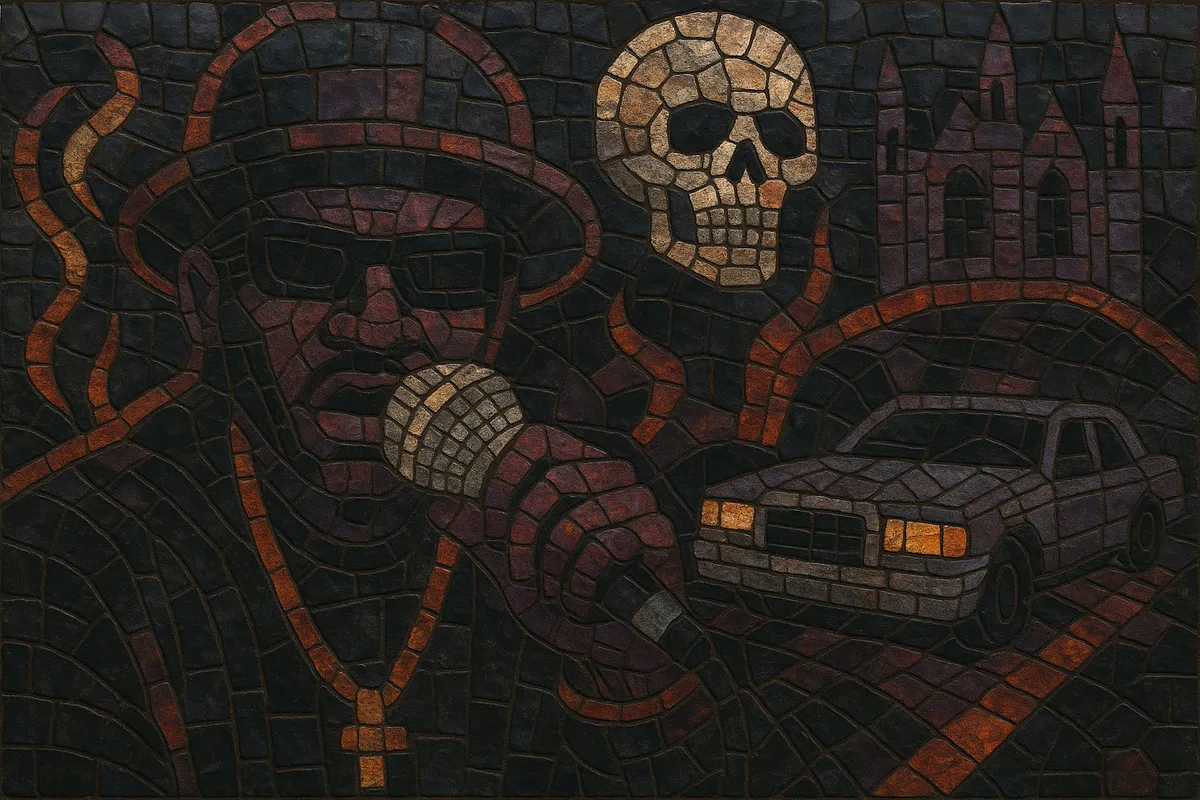
Memphis rap is a dark, lo‑fi branch of Southern hip hop that emerged in Memphis, Tennessee, built on ominous minor‑key melodies, 808 sub‑bass, and relentlessly simple but heavy drum programming.
It is known for horrorcore-leaning imagery, chant-like hooks, and a raw cassette-mixtape aesthetic: hiss, distortion, and minimal mixing are part of the sound rather than flaws.
The style emphasizes eerie synths (organs, choirs, strings, bells), pitched or layered vocals, and sticky, repetitive patterns that create a hypnotic, menacing groove.
Memphis rap coalesced from the local DJ/mixtape scene, with figures like DJ Spanish Fly, DJ Squeeky, DJ Sound, and early underground rappers shaping a distinct sound: 808-driven beats, slowed or mid-tempo pacing, and grim street narratives with occult and horror imagery. The scene grew through hand-to-hand cassette distribution and local parties, fostering a raw, DIY production ethos.
Three 6 Mafia (initially Triple Six Mafia) and their circle codified the style: chanted hooks, haunting minor-key loops, and crushing low end. Their 1995 album "Mystic Stylez" became a landmark, while contemporaries like 8Ball & MJG (Suave House), Tommy Wright III, Playa Fly, Kingpin Skinny Pimp, and Al Kapone expanded the city’s profile. Labels and crews (Prophet Entertainment, later Hypnotize Minds) used prolific mixtape output to saturate the region, making the Memphis sound a Southern touchstone.
While the underground aesthetic remained, the broader industry began to feel Memphis’s influence. Three 6 Mafia’s national success (including an Academy Award in 2006) and Project Pat’s breakout records carried core elements—808 sub-bass, sinister motifs—into mainstream Southern hip hop. The city’s chant-heavy, club-directed energy also fed into the rise of crunk and the evolving Southern sound.
Archive uploads and sample packs of vintage Memphis a cappellas/mixtapes spread online, fueling a massive revival. Producers worldwide—especially in phonk and later drift phonk—sampled Memphis vocals and drum aesthetics, often pairing them with modern production or high-BPM car-culture drops. The city’s lo-fi menace, call-and-response hooks, and 808 weight remain foundational references across contemporary underground hip hop and adjacent electronic scenes.

